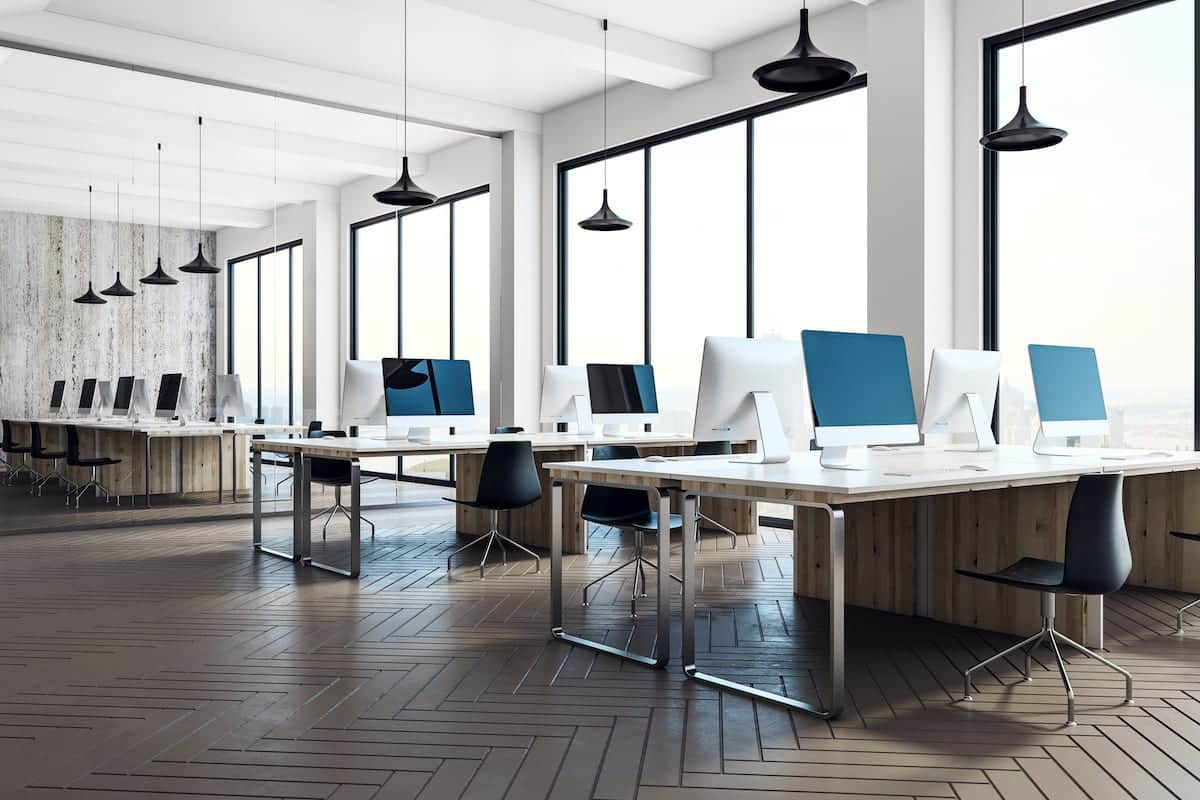Open office design is a familiar concept in today’s business world, where employees work in communal workspaces rather than enclosed offices. Originating in Germany and gaining popularity in the U.S. in the early 2000s, open offices are now the norm in roughly 70 percent of American workplaces.
While open offices were initially seen as promoting collaboration, camaraderie, and flexibility, employees have started to voice concerns about distractions, lack of privacy, and a sense of exposure. Studies have even shown that open offices can lead to lower productivity, decreased collaboration, and decreased morale.
As younger generations and evidence challenge the effectiveness of open offices, employers are exploring new designs to stay competitive. Designers have been experimenting with alternative plans that aim to maintain the benefits of open offices while addressing their drawbacks.
The Pros of an Open Office Design
Open offices were introduced to foster collaboration and communication among employees. By eliminating physical barriers, open offices aim to create a more cohesive and team-oriented work environment.
Collaboration
Open offices promote collaboration by removing barriers between team members, encouraging them to work together and share ideas more freely.
Communication
Easy access to colleagues in an open office setting facilitates communication and idea-sharing, leading to more efficient workflows.
Camaraderie
Working in a shared space fosters a sense of unity and teamwork among employees, promoting a positive and inclusive work culture.
Cost Effectiveness
Open offices are cost-effective in terms of space utilization and IT infrastructure, making them a practical choice for many companies.
Managers More Accessible
Eliminating private offices makes managers more approachable and accessible to their teams, fostering a transparent and collaborative work environment.
Easier Team Supervision
Open office layouts make it easier for managers to supervise their teams and provide support when needed, enhancing overall team performance.
More Flexible to Change
Open offices allow for easy modifications and adjustments as companies grow or evolve, enabling them to adapt to changing business needs.
More Aesthetically Pleasing
Open offices are visually appealing and modern, creating a dynamic and contemporary workspace environment.
More Comfortable
Open spaces allow for natural light and ventilation, creating a comfortable and inviting work environment for employees.
It’s Trendy
Following the trend of open offices can give companies a modern and innovative image, aligning them with successful and progressive organizations.
The Cons of Open Office Design
Despite the perceived benefits of open offices, employees have raised several concerns about their effectiveness. Issues such as distractions, lack of privacy, and increased conflicts have led many to question the suitability of open office layouts.
Collaboration vs. Distraction
While open offices encourage collaboration, they can also be distracting for employees trying to focus on their work. Establishing boundaries and “do not disturb” rules can help mitigate this issue.
Less Privacy
Employees in open offices often feel exposed and lack the privacy they need to concentrate or have personal conversations. This can lead to discomfort and reduced productivity.
Feelings of Micro-Management and Over-Supervising
Some employees perceive open offices as a platform for constant monitoring and supervision, which can create a stressful work environment and hinder autonomy.
Increased Conflicts
Overexposure to colleagues in an open office setting can lead to conflicts and disagreements, impacting team dynamics and overall morale.
Spread of Germs
Close proximity in open offices can increase the spread of germs, leading to more sick days and reduced productivity among employees.
Job Dissatisfaction
Collectively, the drawbacks of open offices can contribute to job dissatisfaction and employee turnover, affecting the retention of valuable talent.
The Harvard Study of Open Workspaces
A recent study by Harvard University revealed that open offices may not have the intended effects on employee behavior. Contrary to expectations, open offices can lead to reduced collaboration and morale, as employees tend to withdraw socially and rely on digital communication.
This evidence has prompted employers to reconsider the benefits of open offices and explore alternative workplace designs that address the concerns raised by employees.
Impacts of Open Offices on Women
It is essential to consider the impact of open offices on women, who may feel more vulnerable and exposed in such environments. Given the importance of creating a safe and inclusive workplace, companies must address the specific concerns of female employees to ensure their well-being and retention.
Talent Retention and The Way Forward from Open Office Designs
While talent is crucial to a company’s success, it is evident that open offices may not be the ideal solution for all employees. To remain competitive and attract top talent, employers should explore innovative workplace designs that balance collaboration, flexibility, and employee satisfaction.
By acknowledging the drawbacks of open offices and embracing new design philosophies, companies can create work environments that support their employees’ well-being and productivity.








































